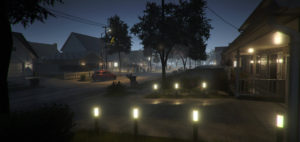
HVS 6D VR can be used for therapy relating to anxiety, depression, phobias (e.g. using the principles of exposure therapy and cognitive behavior therapy), and for deep relaxation and pain management.
It can be used with a therapist present and working one to one with the client while they are in VR, or independently by the client on site or at home.
You can choose from a range of packages in order to use HVS 6D VR in ways that suit you and your clients best:
- A set course of 8 or 24 sessions for a specific condition such as anxiety or depression. This has the advantage of consistency between clients and virtually no training needed for you or your team.
- As above, but also the ability to tailor sessions and sets of sessions to each individual according to their specific needs, and to adjust for each individual as you see them progress.
- Detailed reporting and analysis can be added to the above. This gives the therapist or practice objective insights into how each client is getting on. This can be useful alongside the therapist’s own personal assessment and means that even if the VR sessions are done remotely or without one to one support throughout a session, the therapist can assess how a client is getting on and make well informed decisions about the client’s next session or set of sessions.
- Biofeedback. With our biofeedback modules what happens in a session can be adjusted automatically according to the client’s changing mental or emotional state, as indicated by their physiological responses such as brain waves, sweat or heart rate.
- Exposure therapy. You can allow clients to control what they expose themselves to, using staged experiences where the client can explore an environment and choose, for example, how close to go to a stimulus, or whether to move from a more comfortable situation to a less comfortable one. If preferred, if used with the biofeedback modules you can set the options presented to the client to vary according to biofeedback – e.g. if the client is relaxed at one level, the system presents the option for them to move on to a less comfortable level, but if the client is stressed at a certain level you may present the option for them to move to a more comfortable level. Alternatively it can take the client to different levels of comfort automatically according to biofeedback, or conversely set things can be set to happen at set times. If used with a therapist present then if preferred the therapist can control whether and when the experience becomes more or less comfortable.
The HVS 6D VR experiences are far more realistic and immersive than most VR, and are expertly designed to avoid nausea and discomfort. If you are interested in the technicalities, see “How hard could it be?“
Drone’s eye view of the HVS 4D VR luxurious apartment. The 2D video does not do justice to the the VR experience but is provided for illustration.
Since you can’t experience HVS 4D VR yourself via a 2D screen, we hope this video of participants reacting will give you some insight: